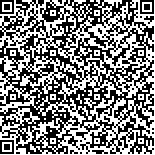| 引用本文: | 李晨旭,王西彬,颜培,冯吕晨,程明辉,焦黎,解丽静,刘志兵.机器人行星复合铣削技术验证实验[J].哈尔滨工业大学学报,2021,53(1):16.DOI:10.11918/202001103 |
| LI Chenxu,WANG Xibin,YAN Pei,FENG Lüchen,CHENG Minghui,JIAO Li,XIE Lijing,LIU Zhibing.Verification experiment of robotic planetary compound milling technology[J].Journal of Harbin Institute of Technology,2021,53(1):16.DOI:10.11918/202001103 |
|
| |
|
|
| 本文已被:浏览 1466次 下载 1079次 |

码上扫一扫! |
|
|
| 机器人行星复合铣削技术验证实验 |
|
李晨旭1,王西彬2,颜培2,冯吕晨1,程明辉1,焦黎2,解丽静2,刘志兵2
|
|
(1. 北京理工大学 机械与车辆学院, 北京 100081;2. 先进加工技术国防重点学科实验室(北京理工大学), 北京 100081)
|
|
| 摘要: |
| 为提高大型铝合金构件的机器人铣削加工效率而不降低加工质量,开展机器人铣削对比实验研究,探索行星复合铣削方法在机器人切削加工领域应用的可能. 提出一种机器人行星复合铣削工具系统,介绍其基本结构与运行原理,并通过建立刀尖运动轨迹模型比较机器人行星复合铣削与机器人端铣刀尖运动轨迹特征. 开展Al-2024单因素机器人铣削试验,对比研究机器人行星复合铣削与沿X或Y方向进给的机器人端铣在加工效率、表面粗糙度和切削力等方面的差异. 结果表明:相对于机器人端铣,机器人行星复合铣削的加工效率至少提升21.34%,表面粗糙度至少降低33.33%,同时其最大切削力分量和轴向切削力均优于机器人端铣. 机器人行星复合铣削相当于多个间隔固定相位角的摆线铣削的有序组合;在相同机器人系统配置与加工参数组合的条件下,机器人行星复合铣削的加工性能优于机器人端铣. 研究结果为实现大型铝合金构件高效机器人铣削提供了新方案. |
| 关键词: 机器人铣削 行星复合铣削 材料去除率 铣削力 表面粗糙度 大型铝合金构件 |
| DOI:10.11918/202001103 |
| 分类号:TG543/TG669 |
| 文献标识码:A |
| 基金项目:国家重点研发计划重点专项(2018YFB2002200);工信部智能制造新模式应用类项目(BJ1807) |
|
| Verification experiment of robotic planetary compound milling technology |
|
LI Chenxu1,WANG Xibin2,YAN Pei2,FENG Lüchen1,CHENG Minghui1,JIAO Li2,XIE Lijing2,LIU Zhibing2
|
|
(1. School of Mechanical Engineering, Beijing Institute of Technology, Beijing 100081, China; 2. Key Laboratory of Fundamental Science for Advanced Machining( Beijing Institute of Technology), Beijing 100081, China)
|
| Abstract: |
| To improve the machining efficiency of robot milling of large aluminum alloy components without reducing the machining quality, a comparative experimental study of applying planetary compound milling method was conducted. A robotic planetary compound milling system was proposed first, while its basic structure and operation principle were introduced. The tool nose trajectories of robotic planetary compound milling (RPCM) and robot end milling (REM) were compared by establishing the models of the tool nose trajectories. Then, a series of single-factor robot milling experiments about Al-2024 were carried out, and the machining efficiency, cutting force and surface roughness of RPCM and REM feeding along X or Y directions were investigated. The results showed that compared with REM, the machining efficiency of RPCM has been improved at least 21.34% and surface roughness has been reduced by at least 33.33%. At the same time, the maximum cutting force component and the axial cutting force of RPCM were superior to REM. The RPCM is equivalent to an ordered combination of multiple trochoidal milling with spaced fixed phase angles. Under the conditions of the same robot system configuration and processing parameter combination, the machining performance of RPCM is better than REM. |
| Key words: robot milling planetary compound milling method material removal rate milling force surface roughness large aluminum alloy component |
|
|
|
|







